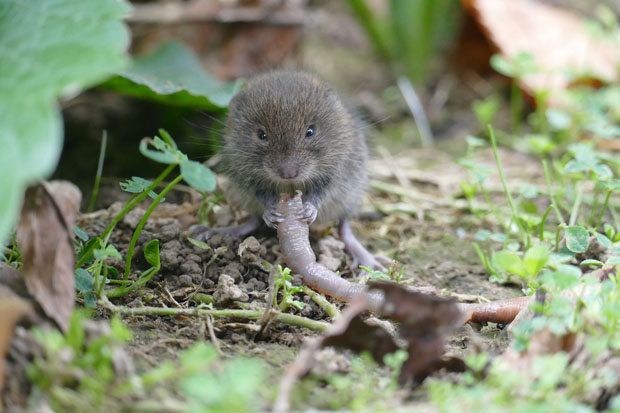Comprehending Vole Lawn Damage and Just How to Combat It
Comprehensive Guide to Reliable Vole Pest Control: Problem Identification and Therapy Approaches
In the world of effective insect control, vole problems pose a special difficulty that requires a tactical approach. By checking out the nuances of vole behavior, comprehending crucial signs of invasion, and examining an array of control alternatives, one can develop a thorough technique to deal with these evasive insects.
Comprehending Vole Behavior
Vole habits is characterized by their delving behaviors and rapid recreation rates, making them a tough pest to control efficiently. These little rats usually create detailed passage systems underground, using them for sanctuary, food storage space, and transport. Voles are herbivores, taking in a range of plants, grasses, roots, and bulbs, which can trigger substantial damage to yards, orchards, and grass. Their rapid reproductive rate additional complicates control initiatives, with females qualified of producing multiple trashes in a single year, each including a number of children.
Voles are most active during the early morning and night hours, spending the majority of their time foraging for food. Their burrowing practices not only disrupt yards and yards however likewise make them challenging to get rid of and detect. Comprehending vole habits is important for reliable insect control strategies. By determining their burrow places, checking feeding locations, and implementing targeted control methods, such as trapping or environment adjustment, vole invasions can be handled efficiently.
Signs of Vole Infestation

Prevention Approaches
Carrying out efficient avoidance methods is crucial in lessening vole problems and guarding greenery from their harmful feeding practices (vole control). To avoid vole invasions, it is important to start by getting rid of possible food sources and sanctuary. Maintain lawn and vegetation cut short, eliminate weeds and particles, and maintain a tidy garden or lawn to make the area much less attractive to voles. Installing obstacles such as hardware cloth or below ground secure fencing can also assist prevent voles from going into particular locations. Additionally, lowering excess dampness by repairing leaky pipes and making sure appropriate drainage can make the atmosphere less hospitable for voles.
Regularly examining the building for indications of vole activity, such as paths and tunnel openings, is essential for very early discovery and prompt action. Think about making use of traps or repellents tactically positioned near their pathways if vole activity is presumed. Employing all-natural killers like snakes or owls can likewise help maintain vole populaces in check. By executing a combination of these avoidance garden enthusiasts, property owners and strategies can effectively secure their vegetation from vole damages.
Non-Lethal Control Techniques
To effectively manage vole populaces while prioritizing humane approaches, non-lethal control strategies provide sensible remedies for decreasing vole damages in gardens and landscapes. One reliable method is making use of physical barriers such as equipment fabric or cord mesh to secure vulnerable plants. These barriers can be buried a minimum of 12 inches deep and bent at a 90-degree angle to stop voles from tunneling underneath. Furthermore, environment alteration can discourage voles by decreasing their chosen food sources and hiding places. Maintaining a well-mowed lawn, getting rid of debris, and keeping plant life cut can make the setting less attractive to voles.

Lethal Control Options
One reliable technique for dealing with vole invasions in yards and landscapes includes the tactical use of dangerous control choices. When faced with an extreme vole problem that non-lethal methods have actually fallen short to include, carrying out lethal control measures ends up being crucial. In general, when utilizing deadly control options, it is crucial to do so sensibly and in conformity with neighborhood regulations to effectively take care of vole invasions.
Final Thought
Finally, efficient vole pest control needs a comprehensive understanding of vole habits, recognition of indications of invasion, implementation of avoidance techniques, and utilization of both deadly and non-lethal control techniques. By integrating these methods, people can effectively take care of vole populations and shield their home from damages. It is essential to resolve vole invasions promptly to avoid further issues and reduce the influence on the surrounding atmosphere.
Provided the elaborate passage systems and rapid recreation rates characteristic of voles, acknowledging the indicators of vole invasion comes to be necessary in efficient bug control. One of the key indications of vole existence is the visibility of surface area runways or tracks in turf or snow, commonly concerning 1-2 inches large, created as voles travel in between their burrows and food resources.To properly handle vole populaces while prioritizing humane techniques, non-lethal control techniques use sensible options for minimizing vole damages in landscapes and yards.One efficient technique for dealing with vole problems in landscapes and gardens involves the tactical use of deadly control options. vole pest control.In conclusion, efficient vole parasite control calls for a thorough understanding of vole habits, recognition of indicators of problem, application of avoidance approaches, and usage of both non-lethal and lethal control methods